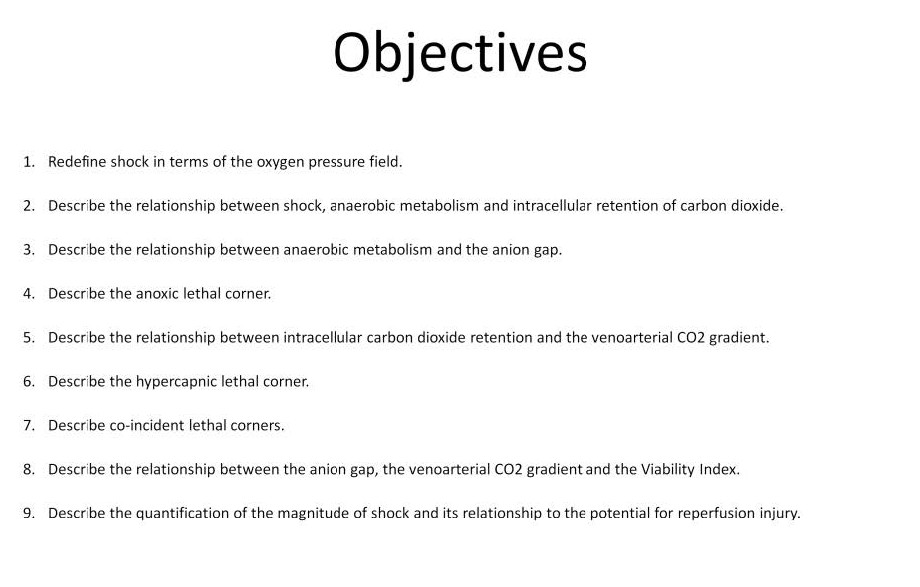
This session will redefine shock in terms of the oxygen pressure field and describe the relationship between shock, anaerobic metabolism and intracellular retention of carbon dioxide. The anion gap can be used to quantify the extent of anaerobic metabolism and the anoxic lethal corner. The venoarterial CO2 gradient quantifies intracellular CO2 retention and the hypercapnic lethal corner. When co-incident lethal corners occur, the patient is at the greatest risk of death. Combining the scores for both anoxic and hypercapnic lethal corners results in a Viability Index which relates to the patient’s risk of death from reperfusion injury even if immediate resuscitation is successful.
The Viability Index quantifies the magnitude of the shock state and delineates a cut-point beyond which the restoration of normal circulation (either by successful resuscitation or extracorporeal support) actually contributes to the patient’s demise by causing a lethal reperfusion injury to the tissues. A patient who exceeds the cut-point may need a modified form of resuscitation that addresses the morbid ramifications of reperfusion injury.

Perfusion Theory is an educational platform for the Oxygen Pressure Field Theory (OPFT). August Krogh’s theoretical concept of the oxygen pressure field is explained and then applied to clinical applications in perfusion practice.